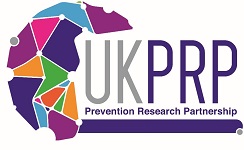Increase in green space associated with fewer preventable deaths in most deprived neighbourhoods
A study from Queen’s researchers finds an increase of green space in most deprived urban neighbourhoods of England, NI, and Scotland is associated with lower preventable death count

-
- Most deprived urban neighbourhoods in England, NI, and Scotland have the lowest provision of green space.
- Increase of green space in most deprived urban neighbourhoods of England, NI, and Scotland is associated with lower preventable death count.
- Investment should be prioritised for the most deprived neighbourhoods and focus not only on quantity but quality and accessibility of green space.
Research led by QUB researchers, published today in the Journal of Epidemiology and Community Health, has examined inequalities in access to urban greens spaces and its association with preventable deaths across the UK. The research has highlighted the ongoing importance of parks and green spaces to health. In urban areas of England, NI, and Scotland, higher percentages of green space was significantly associated with a lower number of preventable deaths among the most deprived neighbourhoods. Examples of preventable deaths include ischaemic heart diseases, cerebrovascular diseases, cancer (depends on types), and chronic obstructive pulmonary disease. Deprivation measures include income, employment, education, health, crime, access to services, and living environment.
In England, with every 1% increase of green space in a geographic area, the annual count of preventable deaths among the most deprived neighbourhoods was lower by 37%. In NI and Scotland, with every 1% increase of greenspace in a geographic area, the 5-year accumulated count of preventable deaths among the most deprived neighbourhoods was lower by approximately 37% and 41%, respectively.
The study showed that inequalities existed in urban green space in England, Scotland and Northern Ireland, the rich having greater access. (In Wales no such inequality was found nor, unsurprisingly perhaps was a relationship with preventable deaths.)
Lead author, Dr Ngan Tran, said, “We believe these findings emphasise the importance of prioritising investment in urban green space within the most deprived areas, which can help address two issues (i.e., inequality in distribution of green space and preventable deaths). The findings can help those working in policy and practice during the decision making process of utilising budget for urban development."
Prior to the 1840s the UK didn't have urban green spaces such as parks that the public could use for recreation. In part this was due to the proximity of the rural hinterland and that industrialization had not yet resulted in emergence of large urban centres where workers and their families lived.
The Victorians identified the need for urban green spaces in which those living often in cramped conditions could benefit from the restorative effects of outdoors recreation within easy reach. This legacy remains with us, public parks - and green spaces more generally - representing a perhaps underappreciated commitment to the public goods they provide.
The parks and other green spaces the Victorians have left us continue to make a valuable contribution to the health of the population. Preserving and enhancing these through with increased investment will pay dividends in terms of preventable deaths and lower health inequalities in preventable deaths. The research provides a useful and timely reminder of the value of such spaces for health and recreation.
Jacqueline O’Hagan from EastSide Greenways said, “The Connswater Community Greenway was developed with four key themes in mind, one of these being to have an impact on the health and wellbeing of the people living in east Belfast. We are delighted to see research such as this being done which offers evidence to support what we see on a daily basis on the Greenway.”
Anne McCusker from Belfast Healthy Cities commented, “Belfast Healthy Cities welcomes this research which highlights the need to invest in green spaces to promote health and reduce inequalities. A core part of Belfast’s membership to the WHO Healthy Cities Network is to create opportunities for healthy, sustainable spaces for all.”
To cite:
Media
groundswell@qub.ac.uk




